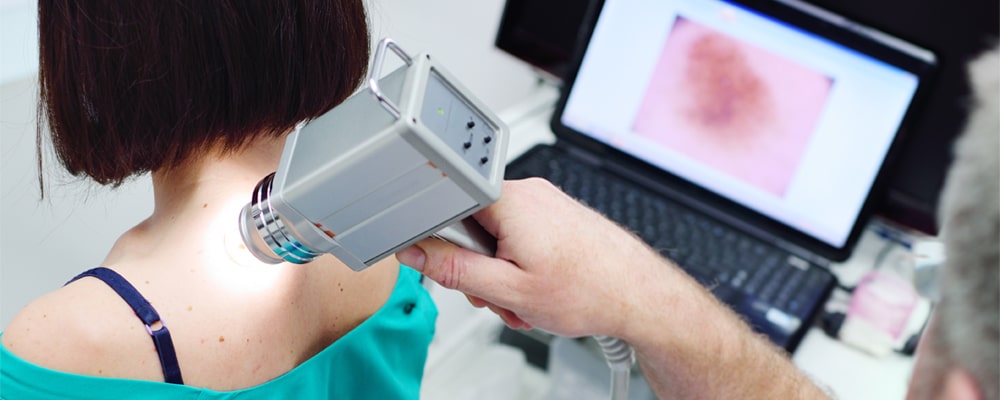
At Skin Care Research, we’re focused on improving both medical and cosmetic dermatology through our FDA-regulated clinical trials. When it comes to sun damage, we conduct trials on actinic keratosis, the pre-cancerous lesions that can turn into skin cancer.
We don’t conduct trials on melanoma, the deadliest form of skin cancer, but as skin care experts we like to keep our patients and study participants informed on what to watch for when looking for the signs of melanoma. In this blog, let’s get into melanoma.
How common is skin cancer?
Skin cancer is the most common cancer in the United States with over 3 million people being diagnosed each year. Twenty percent of us will develop skin cancer sometime of our lives. The incidence of basal cell carcinoma has increased 145 percent since the 1970s; squamous cell carcinoma cases have increased 263 percent. Scariest of all — the American Cancer Society estimates that one million Americans are living with untreated melanoma.
What is melanoma?
Melanoma develops in the cells (melanocytes) that produce melanin, the pigment that gives our skin its color. The exact cause of melanoma isn’t clear, but exposure to UV radiation from the sun or tanning beds increases a person’s risk. This is especially true with peeling or blistering sunburns. Every peeling sunburn a person has doubles his or her chances of developing melanoma in later life.
Melanoma is different from basal cell and squamous cell carcinoma, as it tends to grow downward. If left untreated, this can begin to deposit cancer cells into the bloodstream where they can spread to any area of the body. This is when melanoma can become deadly.
What are the signs of melanoma?
Melanoma can develop anywhere on your body. Lesions most often develop in areas that have had lots of sun exposure, such as the back, legs, arms, and face. Melanoma can also develop in areas without sun exposure, such as the soles of the feet, palms or your hands, and fingernail beds. This rarer form is more common in people with darker skin tones.
The first melanoma signs and symptoms often are:
- A change in an existing mole
- The development of a new pigmented or unusual looking growth on your skin
What signs should I look for to spot melanoma?
Since melanoma is the form of skin cancer that is far and away the deadliest, it’s a good idea to always be on the lookout on your own. With melanoma, you can follow the ABCDE warning signs:
- Asymmetry — If one half of the mole doesn’t match the other half, that’s a concern. Normal moles are symmetrical.
- Border — If the border or edges of your mole are ragged, blurred, or irregular, it should be checked.
- Color — Normal moles are a single shade throughout. If your mole has changed color or if it has different shades of tan, brown, black, blue, white, or red, then it should be checked.
- Diameter — If a mole is larger than the eraser of a pencil, it needs to be checked.
- Evolving — If a mole evolves by shrinking, growing larger, changing color, itching or bleeding, or other changes, it should be checked. Melanoma lesions often grow in size or gain height rapidly.
At Skin Care Research, we conduct clinical trials in various areas of both clinical dermatology and cosmetic dermatology. If you qualify for an ongoing trial, you can receive free treatment and possible compensation. If you’d like more information about our current clinical trials and to see if you would be eligible, please give us a call at (561) 948-3116.
